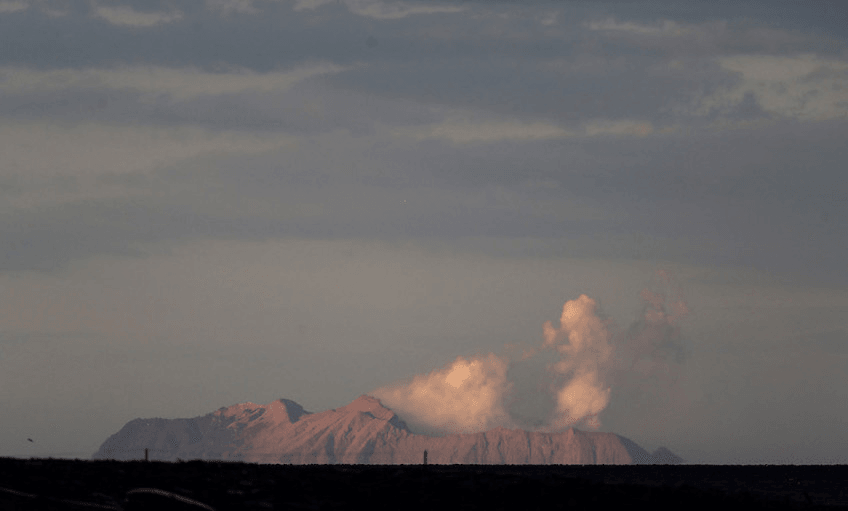Twenty-four hours after the eruption on Whakaari/White Island, here’s what we know about the ongoing situation.
How many people have died?
Currently, the official death toll stands at five, but there are a further eight people missing, who are presumed to have died in the eruption. 31 people remain in hospital and three have been released from hospital.
Who was on the island when the eruption happened?
A mixture of tourists and tour guides. The name of one person who died has been released – tour guide Hayden Marshall-Inman who worked for White Island Tours. Tipene Maangi, another employee of the company, is currently missing.
Among the others on the island, many were passengers on the Ovation of the Seas cruise ship. Among them were a pair of young newlyweds, Lauren and Matt Urey, from the USA. They were rushed to hospital with severe burns.
Many of those caught up in the eruption were Australians. Visitors from the UK, China and Malaysia were also present, along with New Zealanders.
Will there be another eruption?
GeoNet says there’s a 50/50 chance of another eruption taking place within the next 24 hours. “We are still observing localised steam and mud jetting from the active vent area,” the organisation said in a statement. The Volcanic Alert Level remains at three, one rung higher than it was when the eruption took place yesterday.
Has White Island erupted before?
Many times. It’s the most active volcano in the country and this is its sixth and largest eruption since 2000.
What kind of eruption was this one?
It hasn’t been confirmed, but experts have made informed guesses. Dr Marco Brenna from the University of Otago’s geology department said it “was likely an eruption caused by over-pressurisation of the shallow hydrothermal system under the crater of White Island.”
“Basically, input of fresh magma over the past month or so, indicated by increased seismicity and gas emissions recorded by GeoNet, provided heat and energy into the system (like switching on the heat under a pressure cooker). At some point, the shallow crust under the crater could not contain the increased pressure, and that caused the explosion.”
How are recovery efforts faring?
It’s still difficult for emergency services personnel to get onto the island, and a significant amount of ash has now fallen. There is also the uncertainty around further eruptions, and the physical environment of the island is unstable. Initial rescue efforts were halted yesterday due to dangerous conditions.
Will ash clouds reach the mainland?
At this stage, it appears the vast majority of ash will not fall on the mainland, resting instead on the island and in the sea around it. Although that’s somewhat dependent on which way the wind blows. Regardless, those in the area have been told to continue closing all windows and doors to keep ash out of houses.
Should tourists have been on the island at all?
This is a question that’s increasingly dominated discussion around the tragedy. More than 10,000 tourists visit each year, and it’s an important aspect of the wider Whakatāne economy. However, the unpredictability of eruptions has led to experts suggesting the presence of tourists was a mistake.
Ray Cas, from the School of Earth, Atmosphere and Environment at Monash University, said White Island was a disaster waiting to happen. “Having visited it twice, I have always felt that it was too dangerous to allow the daily tour groups that visit the uninhabited island volcano by boat and helicopter. White Island lies almost 50 kms offshore from Whakatāne, and experiences significant explosive eruptions every three to five years.”
Should this eruption have been predicted, given the alert level was raised?
Despite the raised alert level, it’s still almost impossible to predict when an eruption of this nature will take place, said Dr Jessica Johnson from the University of East Anglia. “White Island/Whakaari is an andesitic stratovolcano, which means that it can have lots of different types of eruptions. It also has a water-filled crater lake. When water reacts with hot rock or magma, it can create explosions, and therefore, can make eruptions even more difficult to forecast.”
Are tourists who visit White Island made aware of risks?
Yes – they are given clear warnings that eruptions can happen, and are given breathing masks and hard hats to wear on the island. They are also given clear and repeated instructions to stay on designated pathways.

